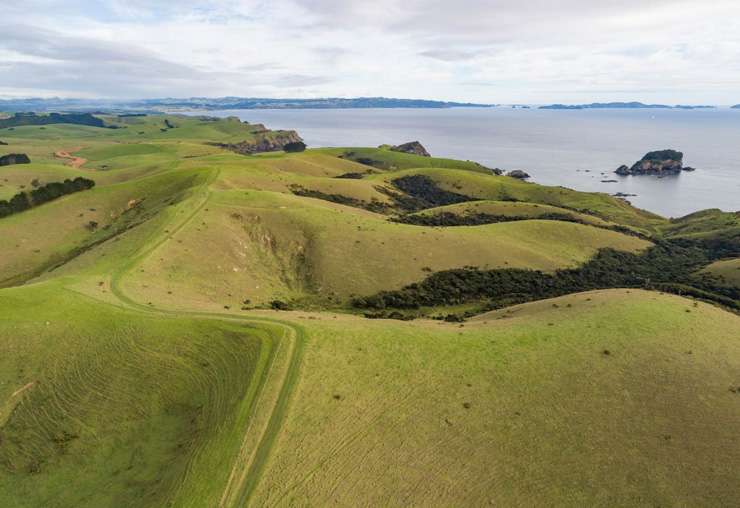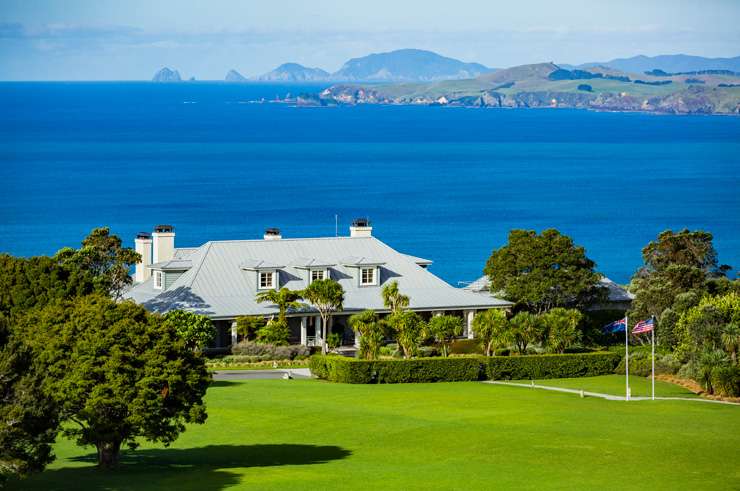A large block of land in coastal Bay of Islands is on the market for the first time in more than 70 years.
Agent Claude Shepherd, of Barfoot & Thompson, says on offer is Purerua Station, 783 hectares on Rangihoua Road, which was originally part of the 3,642 hectares William Raeburn Paterson bought in 1947.
READ MORE: Find out if your suburb is rising or falling
While the Paterson family will be keeping around 400 acres the rest is up for grabs for those who can pay an expected $23,000 to $25,000 per hectare, which takes the price to around $18 million to $20 million.
Start your property search
Those that can’t afford the full price could consider an equity partnership, Shepherd says, which would make the buying way more affordable.
“The Bay of islands is typically a very popular destination and there’s been a lot of subdivision and essentially while there’s a few bigger blocks they very rarely come on to the market so it is quite unique in that aspect, and it is kind of a jewel in the crown in the bay of islands. It’s a spectacular block.”
The buyers would get pretty exclusive neighbours, with Peter Cooper, developer of Britomart, having a substantial property adjoining this one and Mataka Station, a managed farm park on another boundary. Kauri Cliffs golf course is also not far up the road.
The property offers views to the Cavalli Islands and on the sea floor between the Cavalli Islands and Matauri Bay is the scuttled Rainbow Warrior.
The land would suit a variety of people, Shepherd says, who points out coastal land appreciates at a higher rate when economic times are good compared to other land classes.
“They’re not making any more coastal land so it’s very highly sought after.”

The property is on the market for the first time in more than 70 years. Photo / Supplied
Options could be tourism-related development or new owners could explore dividing the block up as there could be potential for housing in 20 smaller blocks.
“They would be pretty spectacular 20 ha blocks still with plenty of places to hide a number of houses without seeing each other, and they’d all have spectacular views.”
Shepherd concedes the full price tag might be a big ask for an individual but says if someone bought with friends, perhaps each paying in the high $4 millions, each could have the best part of 190 hectares.
With the property ripe for equity syndication, this way a group bid could be made with each member getting more land for their money.
Shepherd says postage stamp size sections in the Bay of Islands can go for a small fortune “but if half a dozen or so people got together, or 8 or 9 even, and collectively put a bid in and then decided which block they wanted they’d have a very cheap block.
“Most of these clifftop view stuff we’re talking a million dollars for just a handful of hectares and 20 hectare lots are typically selling between $2.5 and $4m out there.
“If you had a few mates together and got a syndicate together they’re going to end up with a block well below valuation if they were buying them separately. That’s where the opportunity comes in these days.
“It’s a sensible way of doing it because you’re beating a developer to the punch.”
Interest so far has been reasonable and all of it domestic. That’s partly due to Covid-19 but also because under the Overseas Investment Act rules a foreign buyer has to demonstrate a financial benefit to the local community and district over and above what a New Zealander could so would have to do something fairly extraordinary to get consent.
“It could be done but there’s a lot of fairly financial New Zealanders who could buy the whole lot or could invest in a portion of it.”

Kauri Cliffs golf course is close to the property for sale. Photo / Supplied
James Wilson, from OneRoof’s data partner Valocity, agrees a block of land this size is rare with most held in high country farms and many of those in the South Island.
The north has undergone a lot of coastal lifestyle developments but Wilson says there are quite a few vacant sites smaller than this one.
“The Far North pre the Global Financial Crisis was absolutely booming. People were looking to subdivide and develop sites left, right and centre and there were all sorts of international developments proposed. It was going to become the destination for the rich and famous up there and the GFC hit and a lot of those aspirations came crashing down.”
Wilson thinks the development will still happen, he’s just not sure when.
“I think NZ Inc will full stop. We’ve been an increasingly popular destination over the last decade or so and that’s not just because we’re a beautiful country, it’s also because we’ve got other appealing factors such as relatively stable Government and relatively favourable business terms to come over and set up your business.”
The well-regarded Covid 19 response also stands the country in good stead.
Bindi Norwell, chief executive of REINZ, says properties in excess of 750 hectares are by no means a frequent find and can take anywhere from a few months to a few years to sell.
Over the last 12 months there have been 33 properties sold fitting that category with 24 of them classed as livestock grazing.
“The buyer pool for a piece of land this size is rather small and extremely specific as it is highly unlikely that this would be a purchaser’s first piece of rural land and would likely be a farmer looking to upgrade,” she says.
“Whilst this shows that large sections of land are not extremely rare, it all comes down to exactly what you are looking for. Owning a plot of land of this size is a lifestyle choice and purchasers will be specific in the requirements that they are after, and often the region that they are wanting to purchase in.”










































































